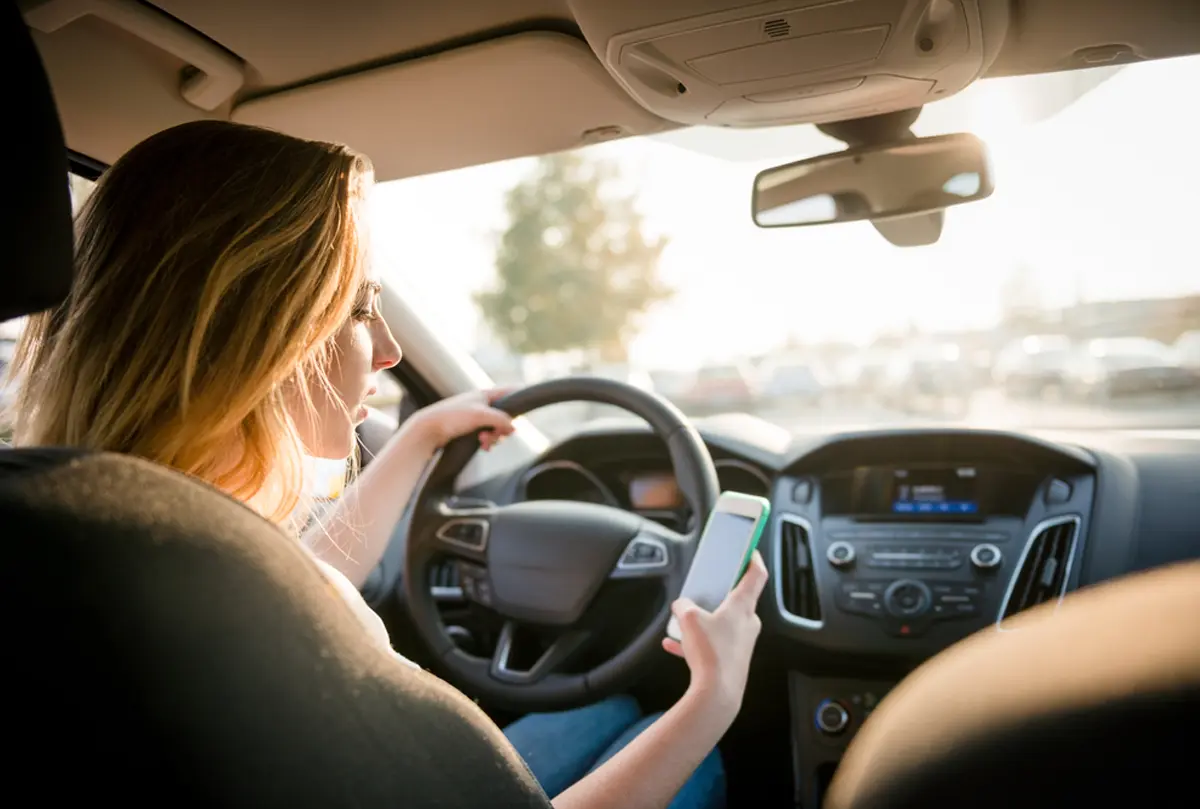
Stay Safe by Understanding the Dangers of Distracted Driving

The Insuraroo
May 19, 2021

According to The Centers for Disease Control and Prevention, distracted driving causes around 1.6 millions crashes, injuring nearly 400,000 people each year1. Distractions contribute to about 1 in every 4 crashes — and that number may be an underestimate, since many drivers are reluctant to report the behavior after an accident2.
Limiting distractions can be difficult, even for experienced drivers. However, by knowing the risks, you can reduce your chances of becoming part of the statistics (and avoid some major expenses).
What Counts as Distracted Driving?
Cell phone use is often considered synonymous with distracted driving, and for good reason: Texting or talking drastically increases a driver’s risk of an accident. However, phones aren’t the only distractions that drivers face on the road.On-road distractions fit into one of the following categories3:
- Visual - If your eyes aren’t on the road, you’re taking a risk. Examples of visual distractions include checking the GPS, searching for something in your car console, or looking at the surrounding scenery.
- Auditory - Auditory distractions overpower important cues such as car horns, rumble strips, or emergency sirens. Loud music is one of the most common examples of an auditory distraction.
- Manual - By taking your hands off the steering wheel, you impair your ability to react to driving situations. Common manual distractions include eating, drinking, or even fiddling with the radio.
Smartphone use — especially texting or sending emails — is especially dangerous because it combines several different types of distractions into one action.
Teen Drivers Are More Likely To Drive Distracted
Teen drivers pay much more for insurance, and they’re much more likely to succumb to distractions. According to the AAA Foundation for Traffic Safety, distraction was a significant factor in 58% of teen driving accidents.4Some key statistics:
- In a 2009 survey, 45% of younger drivers (18-24 year-olds) admitted that they had texted while driving in states that had laws prohibiting the practice5.
- In another survey from 2019, 39% of high school students said that they’d texted or emailed within the past month.6
- 48% of teens say that they text more when alone in their car. 55% said that they texted while driving to update their parents — and 34% said that they took their eyes off the road when receiving app notifications.7
- Teens pay about $1,028 more per year for auto insurance than the national average. Premiums are typically higher for boys, and teens pay even more following an accident or citation.
Distracted Driving Has Serious Consequences (And Costs You Money)
Need more reasons to avoid distracted driving? Depending on where you live, it’s likely illegal — though that doesn’t dissuade drivers from pulling out their phones on the road.
- Texting and driving is illegal in the 48 U.S. states and is considered a primary offense in some locations. That means drivers can be pulled over directly for phone usage.
- Only two states allow texting and driving. Missouri doesn’t ban the practice except for drivers 21 and younger; Montana has no restrictions on cellphone use.9
- In most states, distracted drivers can receive fines ranging from $20 to $10,000 and up to 10 days in jail for serious offenses.
- While some studies have found that distracted driving bans have led to reductions in crashes, the evidence isn’t conclusive.
A Distracted Driving Ticket Can Cause Insurance Rates to Skyrocket
Insurance companies understand the statistics — and a distracted driving violation can have an enormous effect on a driver’s auto insurance bill. A single citation may cause a premium increase of 20 percent, though the amount of the increase will vary for individual drivers. Insurers also consider driver history, zip code, credit score, and various other factors when figuring rates.
Here are a few tips for avoiding a distracted driving ticket:
- Consider upgrading your vehicle. Many newer vehicles have “infotainment" systems that allow for hands-free calling and text responses. Again, hands-free communication is still a distraction — but research from the AAA Foundation for Traffic Safety found that infotainment systems can reduce distracted driving, particularly for older drivers.11
- Some newer vehicles also have collision detection systems and lane guidance features, which can further limit risks (and possibly reduce insurance premiums).
- Use your phone’s “drive mode.” Android12 and Apple13 smartphones have settings to automatically disable notifications while driving. That’s a great way to avoid temptation — though you’ll need to manually turn on the options in order to benefit.
- Use common sense. Consider keeping your phone in your glovebox or somewhere else where it won’t cause a distraction. Choose your music, adjust your seat, and take other necessary actions before you start driving — once your car’s in gear, pay attention to the road.
Finally, remember that there’s no safe way to use a cell phone while driving. Even if you’re having a discussion hands-free, you’re still talking while driving — and you can miss up to 50% of what’s happening around you, per estimates from the National Safety Council
Endnotes
- https://newsroom.aaa.com/2019/02/think-youre-in-your-car-more-youre-right-americans-spend-70-billion-hours-behind-the-wheel/
- https://247wallst.com/special-report/2020/11/17/americas-worst-cities-to-drive-in-2/
- https://smartgrowthamerica.org/dangerous-by-design/
- https://ops.fhwa.dot.gov/weather/q1_roadimpact.htm
- https://www.osha.gov/sites/default/files/publications/SafeDriving.pd
- https://safety.fhwa.dot.gov/speedmgt/ref_mats/fhwasa1121/sec1.cfm#sec11
- https://www.insurancebusinessmag.com/us/guides/revealed-most-and-least-expensive-places-in-the-us-for-car-insurance-234288.aspx